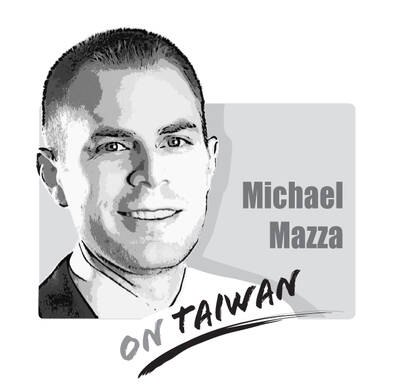The Ministry of Economic Affairs this month proposed tax incentives in its latest effort to safeguard Taiwan’s crucial role in the world’s chip supply chain, following similar, but more significant, incentives and subsidies launched in the US, EU, Japan and South Korea. While efforts in those countries aim to subsidize the construction of new factories to build their own resilient chip operations, the ministry’s proposal is focused on incentivizing research and development (R&D), which makes sense, as Taiwanese firms have already built a strong domestic foothold with hefty investments in capacity.
The draft amendment to the Statute for Industrial Innovation (產業創新條例) proposes a 25 percent tax deduction on eligible companies’ R&D costs, up from 15 percent. It also proposes a tax break of 5 percent on advanced equipment procurement, granted the total deductions do not exceed 50 percent of a firm’s overall income taxes. The ministry is pushing the legislature to pass the bill before the end of the year.
However, the bill does not specify a minimum level of R&D expenditure to qualify for the tax breaks, leaving some companies worried that they might be excluded from the incentives. Instituting a high threshold of NT$10 billion (US$322.45 million) in R&D expenditures per year would only benefit large companies such as Taiwan Semiconductor Manufacturing Co (TSMC) and smartphone chip designer MediaTek Inc, which invested NT$300 billion a year in Taiwan, primarily in R&D.
The ministry said its plan seeks to encourage new investment in cutting-edge technologies and advanced equipment across sectors such as 5G, electric vehicles and low Earth orbit satellites. That would make it difficult to help small start-ups that cannot easily break into those fields.
The bill also does not define the word “advanced.” A high bar would make it inaccessible to most businesses. TSMC considers the 7-nanometer manufacturing process and smaller to be advanced. If the ministry agrees, then Microelectronics Corp, TSMC’s closest rival in Taiwan, would not squeeze onto the short list for tax breaks with its 14-nanometer process, which is one generation behind 7-nanometer production.
Powerchip Semiconductor Manufacturing Corp chairman Frank Huang (黃崇仁) said it would be “unfair and unreasonable” if the tax breaks were only available to certain big companies’ investments in “advanced” technologies. Powerchip makes power management chips and IC chips for displays using less advanced technologies, including 40-nanometer and 90-nanometer processes.
Taiwan’s effort to spur chip development provides limited financial support to local industries and would have minimal effect, given its insignificant scale and lack of scope. The ministry’s measures do not touch on the most important issues local businesses face, such as talent shortages. The tax breaks are only available for investments in advanced technology development and capacity expansion, which companies have been doing to stay competitive even without government incentives.
The semiconductor industry deserves the ministry’s help in any form, as it has significantly contributed to the country’s GDP. The ministry must be thorough in creating policies to keep such a vital industry thriving.

Could Asia be on the verge of a new wave of nuclear proliferation? A look back at the early history of the North Atlantic Treaty Organization (NATO), which recently celebrated its 75th anniversary, illuminates some reasons for concern in the Indo-Pacific today. US Secretary of Defense Lloyd Austin recently described NATO as “the most powerful and successful alliance in history,” but the organization’s early years were not without challenges. At its inception, the signing of the North Atlantic Treaty marked a sea change in American strategic thinking. The United States had been intent on withdrawing from Europe in the years following
My wife and I spent the week in the interior of Taiwan where Shuyuan spent her childhood. In that town there is a street that functions as an open farmer’s market. Walk along that street, as Shuyuan did yesterday, and it is next to impossible to come home empty-handed. Some mangoes that looked vaguely like others we had seen around here ended up on our table. Shuyuan told how she had bought them from a little old farmer woman from the countryside who said the mangoes were from a very old tree she had on her property. The big surprise
The issue of China’s overcapacity has drawn greater global attention recently, with US Secretary of the Treasury Janet Yellen urging Beijing to address its excess production in key industries during her visit to China last week. Meanwhile in Brussels, European Commission President Ursula von der Leyen last week said that Europe must have a tough talk with China on its perceived overcapacity and unfair trade practices. The remarks by Yellen and Von der Leyen come as China’s economy is undergoing a painful transition. Beijing is trying to steer the world’s second-largest economy out of a COVID-19 slump, the property crisis and
Ursula K. le Guin in The Ones Who Walked Away from Omelas proposed a thought experiment of a utopian city whose existence depended on one child held captive in a dungeon. When taken to extremes, Le Guin suggests, utilitarian logic violates some of our deepest moral intuitions. Even the greatest social goods — peace, harmony and prosperity — are not worth the sacrifice of an innocent person. Former president Chen Shui-bian (陳水扁), since leaving office, has lived an odyssey that has brought him to lows like Le Guin’s dungeon. From late 2008 to 2015 he was imprisoned, much of this